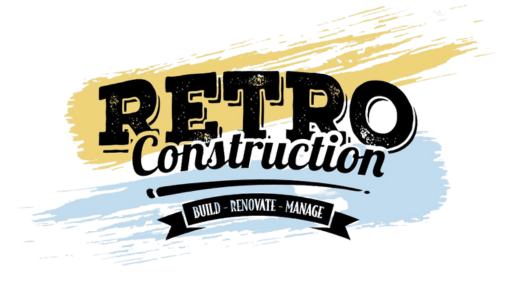The Importance of Structured Workflows
Any company should have a structured way of working to enhance services and improve systems, ultimately saving time and reducing costs for clients. It is important to ask about these processes, as they provide insight into how well your project will be managed too. Companies may not readily disclose their internal procedures, which have likely been developed over years, as these could be considered trade secrets. However, once you engage or indicate interest in working with them, you should be informed about their workflows and processes. A reputable company will continuously improve its services and products, even if their systems are already optimized. In today’s ever-evolving world of technology, there is always room for improvement.
The Importance of Onboarding Documents
One of the most crucial documents for any client is the onboarding letter or brochure. This standard document outlines essential procedures throughout, including:
- How a project will be handled
- Payment schedules
- Expected procedures
- Communication expectations during the project.
While companies may not share all their internal documents publicly either, they should provide a basic outline of what clients can expect in the initial meeting/s. More detailed information should be made available once you officially onboard with the company too.
Pricing and Cost Considerations
Finding a compatible contractor involves more than just considering the best price! Losses can be easily underestimated if your concern isn’t also set on a good timeframe. While pricing is a critical factor in today’s economy, where everything is costly, it is equally important to see how your builder can work within your budget, while maintaining quality and making informed material choices. Striking a balance between cost, quality and efficiency is far more crucial than focusing on price alone-just as it is in many aspects of life! (For further insights, you can refer to our article Paid for vs Free Estimates, available on our website and also pinned to the top of our Facebook page).
Legal Aspects and Documentation
Once an onboarding letter/pre-agreement is agreed upon, a formal agreement (usually fixed) will be drafted. This will include attachments provided by the contractor, which should also reference in the agreement as to what will be supplied. In some cases, agreements below a specified amount (e.g., $30,000 in NZ) may not be legally required, making the process more flexible. However, it is always advisable to have a formal agreement where possible. As the client, you have the right to request one if you prefer!
The following legal documents and procedures are typically involved:
Invoices and Statements: Indicating due dates, percentage payments, initial deposit payments, progress payments, and final payments upon completion of the project.
Guarantees/Warranties: Provided at project completion, sometimes along with the Code Compliance Certificate (CCC), depending on whether the CCC is handled in-house or by an external agency, the Contractor may send only the Guarantees/Warranties.
Terms of Trade and Privacy Statements: These documents outline how personal information is handled, as well as key project and payment terms, clearly defining the responsibilities of both parties. Our company provides these documents, along with a website disclaimer, to ensure full transparency. Most companies will share them with you before proceeding with a Quotation, or they may be publicly available on their website or Facebook page, to ensure they are always accessible and read.
Turnkey Services and Project Management
Companies offering turnkey services manage multiple or all aspects of a project, allowing clients to deal with a single point of contact . These contractors often act as project managers and mostly have formal qualifications. You can ask for proof of this. They may also work with in-house professionals such as architects, engineers and/or designers who handle building consents, CCC applications, and council documents. While it is possible to engage a separate agency for these services, more hands in a project often lead to increased costs and confusion. Project managers help reduce expenses by managing paperwork in-house (usually for free) and leveraging their established relationships with suppliers and professionals to secure discounts. They also ensure that all assigned tasks are properly executed by regularly checking in and verifying procedures and responsibilities assigned to other professionals.
Additional Professional Services
In some cases, a contractor may need to engage additional professionals such as:
- Design engineers
- Geotechnical engineers
- Other specialized consultants
Professionals, like the above, may be required at different stages of the project to ensure compliance and structural integrity.
Key Steps in the Project Timeline
A well-structured contractor will follow a clear process, typically outlined in the onboarding letter. The key steps include the following, may also differ somewhat between Companies:
Verbal Agreement on Time and Payment: Preliminary discussions to ensure alignment.
Quotation Acceptance: Confirmation of project scope and budget (usually first done verbally and then in writing).
Agreement Drafting (if needed): Formalizing the contract once the Quotation has been accepted in writing.
Planning Schedule and Payment Schedule Creation: Essential for larger projects, to convey what will happen during the project and when initial, progress and final payments will be needed. More progress payments may be necessary for larger projects.
Regular Invoicing and Statements: Keeping financial records up to date for the company to run an efficient business and the client informed of the stance of payments.
Insurance Updates: Ensuring coverage for all involved parties the Contractor will have, to have minimal liability insurance, but some may cover themselves for added risks. You also need to inform your own insurance company of your build. They may, or may not, increase your cover for this period if they feel there is risk.
Ongoing Communication via Social Media, Blogs, and Newsletters: Keeping clients informed, understanding the contractors specialty fields, viewing feedback from other clients, finding historical information about the company, seeing referrals, and so much more!
Understanding these steps helps clients navigate the construction process more effectively, ensuring a smoother experience from start to finish. We cannot emphasize enough how crucial the planning stage of any project is! In fact, good planning can result in the actual build being completed in half the time compared to a poorly planned project. It can also save significant costs and prevent unnecessary delays.
We trust this article has been helpful to you in some way! Even if you have only learned two things from it, they could be your lifesavers during the build! Great planning leads to a stress-free construction experience, allowing you to enjoy the entire process—not just the finished result, leaving you to concentrate on what you need and want to do while your project is ongoing!
If you have a building project coming up or would like to discuss your project with us.





